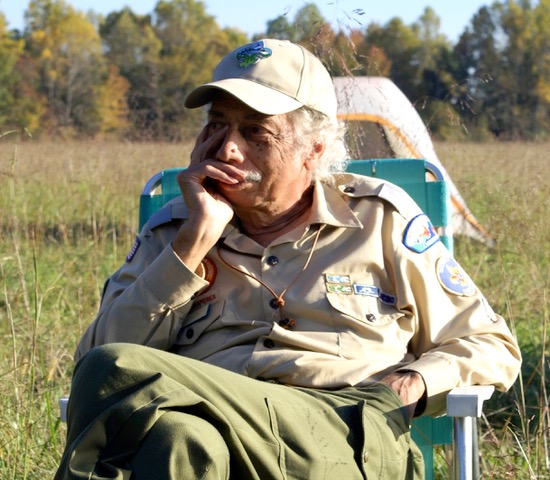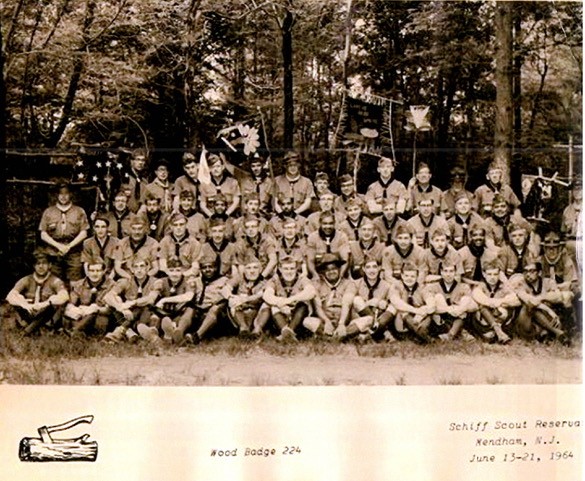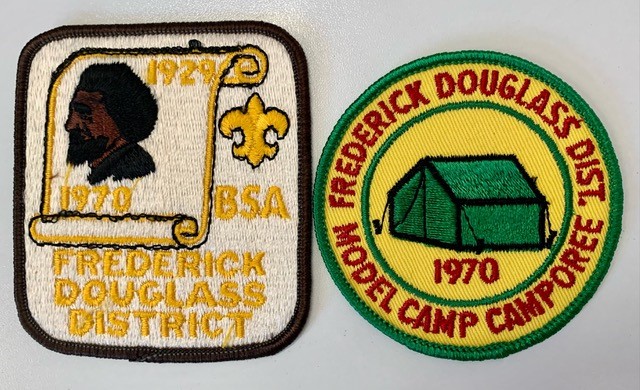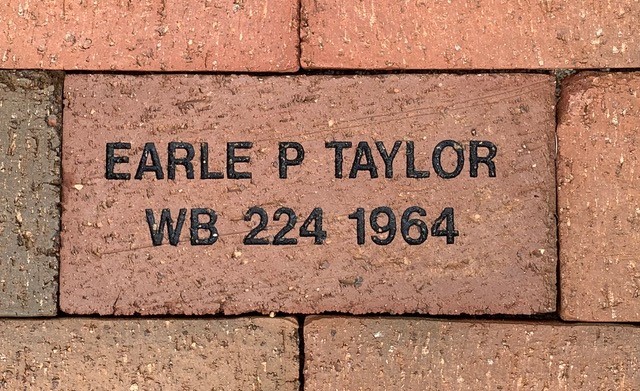
Earle Taylor
Throughout Black History Month, the Heart of Virginia Council is proud to spotlight influential Scouts, both local and historical, who have left an impact on our program and community at large. This week, we are sharing the story of Earle Taylor, a Richmond icon and renowned photographer.
Mr. Taylor is a long-time supporter of local Scouting, especially in the Capitol District. In 1964, he and four other local Scout leaders became the first black Virginians to take Wood Badge. He served as the last District Commissioner of the Frederick Douglass District when Scouting was integrated in 1970, serving then as the first District Commissioner of our Capitol District. Several years ago, Mr. Taylor earned and received his 80-year BSA pin. Below are photos of one of the bricks honoring Mr. Taylor at Cub Adventure Camp, Mr. Taylor’s Wood Badge class, and vintage Frederick Douglass District patches.
The following is an excerpt from Earle Taylor’s Biography from the book, “Richmond’s Negro Boy Scouts” by William C. Hocker and the Richmond Magazine article noted in the sources below.
Earle Taylor was born March 15, 1928, in Richmond. He graduated from Van de Vyver Institute in 1945. He has pursued a career with the U.S. Postal Service.
Earle Taylor is a member of Saint Paul’s Roman Catholic Church. He has been active in the community as a president of the Richmond Chapter of the National Conference of Artists and a national coordinator of regions of the National Conference of Artists. Taylor is a partner at The Last Stop Gallery and has a strong interest in Scouting, community service and all phases of the arts, including jazz. He is a freelance photographer and has exhibited his work internationally.
Earle Taylor became active in Scouting as a Cub Scout in Pack 79 in 1938. He later became a troop committeeman. Taylor served as the chairman of most committees in the Frederick Douglass District until 1967. He was among the first group of black Virginians to receive Wood Badge beads.
Earle Taylor has been honored in Scouting as the recipient of the Order of Merit, the St. George Emblem and the Silver Beaver award. He participated as a national staff person in the 1977 and 1981 National Jamborees. At present, he is a District Commissioner in the Capital District.
Taylor is proud of his background, which comes from strains of (he lists on long fingers) “African, Cherokee, Powhatan and Irish. We’re all scattered. We have the endurance of the African, the perception of the Indian and the aggressiveness of the Irish. My maternal grandmother was freed from slavery at age 9 [in South Carolina]. She died in my house.” His maternal grandfather, Franklin Milton Gregg, from the Pee Dee River country, at 16 joined the Confederate army and was promptly wounded in the leg at the Battle of Seven Pines and sent home due to his age. “I am in communication with my double-eighth Irish cousins,” Taylor says, eyes bright as he chuckles. “We’re all mixed, and always have been. We love conflict.”
He continued studying photography while in the U.S. Army Signal Corps at Ft. Gordon, Georgia. After this military stint he pursued photography at a University of Virginia extension in Richmond, where an instructor at the technical center criticized Taylor for the darkness of his images. They needed to be bright as postcards, and that wasn’t for him.
During the 1970s, Taylor helped produce black arts festivals around the city until he was approached by Pine Camp to teach photography. The center possessed no equipment and not even a darkroom. “We used the public bathroom as the darkroom,” he says. He taught youngsters — even taking them up in small planes to capture landscapes — and adults.
Taylor became a board member of the Last Stop Gallery on Main Street in Shockoe, which lasted from 1974 to 1995, and exhibited work of international and regional artists. He says the Last Stop started its Friday monthly openings in 1980. Taylor’s exhibitions have primarily taken place in university settings, which he prefers, because he’s not selling the work. He’s shown throughout the country, and in galleries in Brazil and the Caribbean. “My life has been really about supporting the cultural, political and Catholic life in Richmond,” he says. Taylor’s involvements have ranged from scouting to the Very Special Arts, which provides arts education for children and adults with disabilities.
Sources:
Hocker, William C. Richmond’s Negro Boy Scouts. Phillip Morris USA, 1989.
Jr., Harry Kollatz. “The Worlds of Earle Taylor.” Richmondmagazine.com, 16 Nov. 2016, https://richmondmagazine.com/arts-entertainment/galleries/earle-taylor-photographer/.


